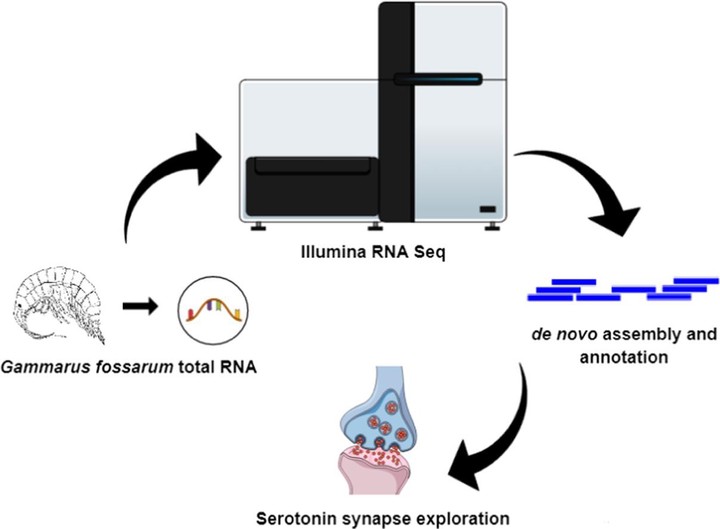Complete transcriptome assembly and annotation of a critically important amphipod species in freshwater ecotoxicological risk assessment - gammarus fossarum

Abstract
Because of their crucial role in ecotoxicological risk assessment, amphipods (Crustacea) are commonly employed as model species in a wide range of studies. However, despite their ecological importance, their genome has not yet been completely annotated and molecular mechanisms underlying key pathways, such as the serotonin pathway, in development of ecotoxicological biomarkers of exposure to neuroactive pharmaceuticals are still poorly understood. Furthermore, genetic similarities and discrepancies with other model arthropods (e.g., Drosophila melanogaster) have not been completely clarified. In this report, we present a new transcriptome assembly of Gammarus fossarum, an important amphipod species, widespread in Central Europe. RNA-Seq with Illumina HiSeq technology was used to analyse samples extracted from total internal tissues. We used the Trinity and Trinotate software suites for transcriptome assembly and annotation, respectively. The quality of this assembly and the affiliated targeted homology searches greatly enrich the molecular knowledge on this species. Because of the lack of publicly available molecular information on the serotonin pathway, we also highlighted sequence homologies and divergences of the genes encoding the serotonin pathway components of the well-annotated arthropod D. melanogaster, and Crustacea with the corresponding genes of our assembly. An inferior number of hits was found when running a BLAST analysis of both D. melanogaster and Crustacea mRNA sequences encoding serotonin receptors available in GenBank against the total assembly, compared to other serotonin pathway components. A lack of information on important components for serotonin biosynthesis and vesicle endocytosis (i.e., tryptophan hydroxylase and vesicular monoamine transporter) in Crustacea was also brought to light. Our results will provide an extensive transcriptional resource for this important species in ecotoxicological risk assessment and highlight the need for a more detailed categorization of neuronal pathways components in invertebrates.